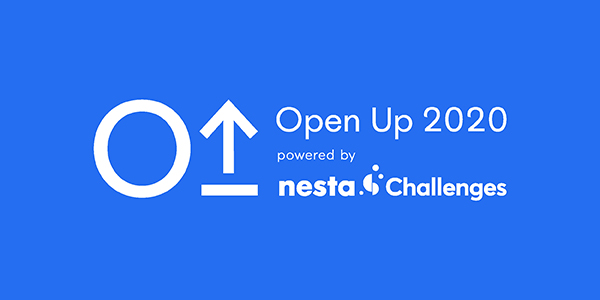
Marketing is an essential component of success for any business. However, it’s not enough to simply spend money on advertising and promotions. You need to ensure your marketing efforts are delivering a positive return on investment (ROI) and driving growth for your business.
This is where a well-designed marketing budget that ensures you’re maximising your marketing ROI comes in.
What is ROI and ROAS?
ROI stands for Return on Investment. It's a way to measure how profitable an investment or marketing campaign is. Basically, it tells you if you're getting more back from your investment than what you put into it.
On the other hand, ROAS stands for Return on Advertising Spend. It's a metric specifically used to evaluate the effectiveness of your advertising campaigns. It helps you figure out if the money you're spending on a particular advertising channel or campaign is generating enough revenue to justify the investment.
What is the Difference Between ROI and ROAS?
This article will focus on ROI, but having knowledge on the difference between ROI and ROAS, as well as how they help you maximise your marketing budget, will help you make more informed decisions.
It's important to understand the difference between ROI and ROAS when measuring the success of your marketing efforts. ROAS is typically used to measure the return on investment for a specific advertising channel or campaign. It takes a more linear approach, where you invest money in one channel and measure the return on that investment.
On the other hand, ROI takes a more holistic approach, considering the entire marketing ecosystem, including offline marketing such as word-of-mouth and networking, and various online practices such as PPC, social media ads, and organic search. This involves an omnichannel attribution modeling, which shows how all the different marketing channels work together to create a cohesive strategy.
If your marketing strategy is effective, it should result in a positive ROI, meaning that the return on your total investment is greater than the cost of that investment.
By understanding the difference between ROI and ROAS, you can gain a deeper insight into the effectiveness of your marketing efforts and make data-driven decisions to optimise your budget allocation.
Why is ROI Important for Marketing?
As mentioned above, your ROI is your “return on investment”, which is a measure of the profit or revenue generated by an investment compared to the cost of that investment. In the context of marketing, ROI is a way of evaluating the effectiveness of your marketing campaigns by comparing the revenue generated by those campaigns to the cost of running them.
Calculating ROI is important for marketing because it allows you to evaluate the effectiveness of your campaigns and make data-driven decisions about how to allocate your budget. By tracking ROI, you can identify which channels and campaigns are delivering the highest return on investment and adjust your budget accordingly. This helps you to maximise your marketing budget and ensure that your efforts are driving growth and revenue for your business.
Analysing Your Marketing ROI: Key Metrics and Tools to Consider
Before you can start building your marketing budget, you need to understand how to measure your ROI.
There are several metrics and tools you can use to do this, including:
- Customer Acquisition Cost (CAC): this metric measures the cost of acquiring a new customer. To calculate your CAC, divide your total marketing spend by the number of new customers acquired during a specific time period. A low CAC indicates that your marketing efforts are efficient and effective, while a high CAC suggests the opposite.
- Lifetime Value (LTV): LTV measures the total revenue a customer is expected to generate over their lifetime with your business. To calculate your LTV, multiply the average value of a purchase by the average number of purchases made per customer per year, and multiply that by the average length of a customer relationship in years. A high LTV is a sign that your marketing efforts are driving customer loyalty and retention, which can lead to sustained revenue growth over time.
- Conversion Rates: Conversion rates measure the percentage of website visitors or leads that take a desired action, such as making a purchase or filling out a form. To calculate your conversion rate, divide the number of conversions by the number of website visitors or leads during a specific time period. A higher conversion rate indicates that your marketing efforts are effectively driving engagement and interest from your target audience.
- Attribution Models: Attribution models help you understand which marketing channels and campaigns are contributing to conversions and revenue. There are several different attribution models to consider, such as;
- First-Touch: attributing a conversion to the first touchpoint a lead had with your brand
- Last-Touch: attributing a conversion to the last touchpoint before the sale
- Multi-Touch: attributing a conversion to multiple touchpoints along the customer journey.
Using an attribution model that is tailored to your business goals and marketing strategy, you can better understand which channels and campaigns are driving the most revenue.
By analysing these metrics, you can identify which marketing channels and campaigns are driving the most revenue for your business and adjust.
Defining Your Marketing Goals
To build an effective marketing budget, you need to have a clear understanding of your business objectives and marketing goals.
There are several goals businesses commonly want to achieve through their marketing, such as:
- Increase Brand Awareness
- Generate Leads
- Drive Sales
- Improve Customer Retention
Once you have a clear picture of your marketing goals, you can allocate your budget to the channels and campaigns that are most likely to achieve your desired goals.
Establishing Budget Priorities and Identifying High-ROI Channels and Campaigns
Once you have a clear understanding of your marketing goals and market trends, it’s time to start prioritising your budget. This means identifying the channels and campaigns that are delivering the highest ROI and allocating more of your budget to those areas.
For example, say you’ve been running social media campaigns, email campaigns, and PPC advertising to generate leads and sales. After analysing your metrics, you find your social media campaigns have a lower CAC and was generating more leads and sales than your email campaigns and PPC ads, you may want to shift more of your budget to your social media campaigns as it’s delivering a higher ROI and should be higher priority in your marketing budget.
Regularly evaluating the ROI of your marketing channels and campaigns allows you to adjust your budget, and reallocate your budget from low-performing channels and campaigns to high-performing ones to maximise your ROI.
In addition to tracking metrics, its important to consider marketing trends and audience behaviour when allocating budgets. For example, if your target audience is primarily using social media to research and purchase products, it would be in your best interest to allocate more budgeting to social media advertising than to other marketing channels such as email or PPC.
Balancing Short-Term and Long-Term Goals to Craft a Realistic Budget
When building a marketing budget, it’s important to strike a balance between short-term and long-term goals. While you may be tempted to focus all of your budget on campaigns that generate immediate results, it’s also important to invest in activities that will deliver long-term benefits, such as brand awareness and customer loyalty.
It’s easy to focus solely on short-term goals, as they provide immediate gratification and tangible results. However, neglecting long-term goals can harm your business in the long run.
To craft a realistic marketing budget that balances your short and long-term goals, you need to evaluate your marketing goals and objectives. Identify which goals are short-term and which are long-term, and allocate your budget accordingly.
For example, if you're launching a new product, you may want to allocate more of your budget to short-term goals such as PPC advertising and social media campaigns to generate immediate sales. However, you should also invest in long-term goals such as content marketing and SEO to build that vital brand awareness and gain customer loyalty over time.
It's important to note that long-term goals require ongoing investment and effort. Building brand awareness and customer loyalty is not an overnight process, and it requires consistent effort and investment over time. By allocating a portion of your budget to long-term goals, you can ensure that your marketing efforts are sustainable and scalable in the long run.
Simon Sinek talks about the importance of being a sustainable business in The Infinite Game. You want your business to be one that is around for a long time and serves many generations, which can only be achieved by finding balance between your short and long-term goals, and not allowing yourself to be roped in by the temporary and immediate satisfaction of short-term wins.
Maximising ROI with Data-Driven Decisions
Maximising ROI with data-driven decisions is a crucial aspect of building a successful marketing budget. This process involves regularly monitoring and adjusting your marketing budget based on the data you collect. The data-driven approach involves tracking your ROI and other key metrics to identify areas where you may need to adjust your budget or reallocate resources.
To make data-driven decisions, you need to gather accurate data and use it to make informed decisions. This requires setting up analytics tools and tracking software that allows you to measure and track the performance of your marketing campaigns accurately.
Once you’re able to analyse your data, you’ll be able to make better-informed decisions about where to allocate your budget.
Best Practise for Building a Marketing Budget that Fuels Success
Building a marketing budget that gives you the very best ROI and fuels your business successes requires careful planning, monitoring and adjusting. By analysing your marketing ROI, defining your marketing goals, assessing marketing trends, establishing budget priorities, and crafting a realistic budget, you can ensure that your marketing efforts are effective, efficient and aligned with your business objectives. Additionally, by monitoring your budget and adjusting your resources based on data-driven decisions, you can maximise your ROI and maximise the impact of your marketing budget.
Implementing best practices for building a marketing budget takes time and effort, but the rewards are significant. By creating a budget that is tailored to your business's unique needs and goals, you can ensure that your marketing efforts are driving growth, increasing revenue, and delivering a positive return on investment.
Whether you’re a small business owner or a marketing professional at a large organisation, these strategies can help you build a budget that fuels your business success.









